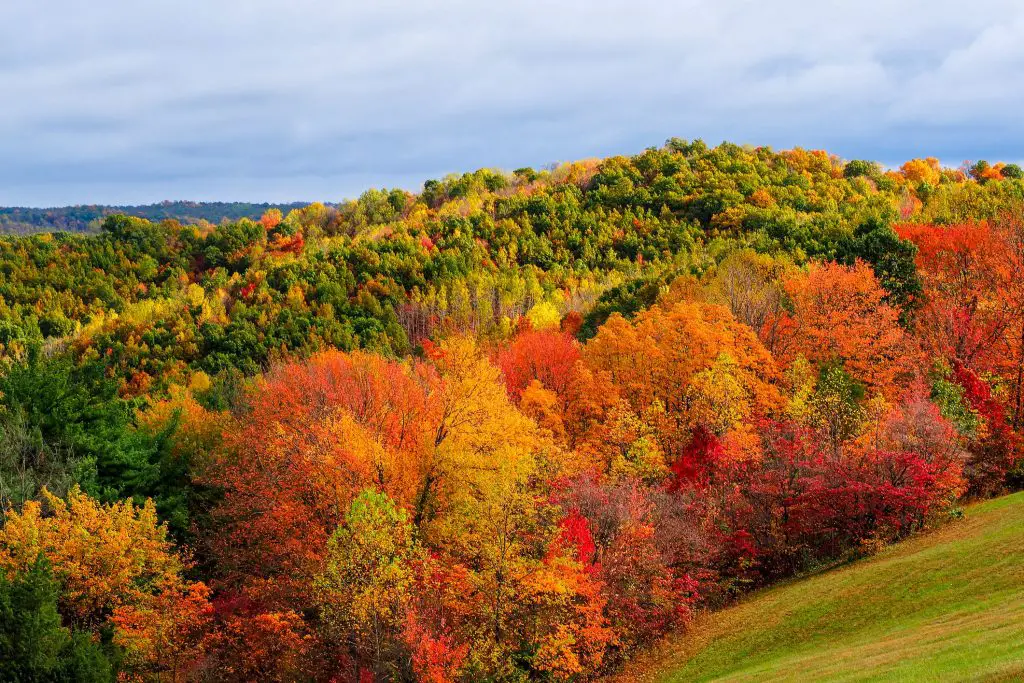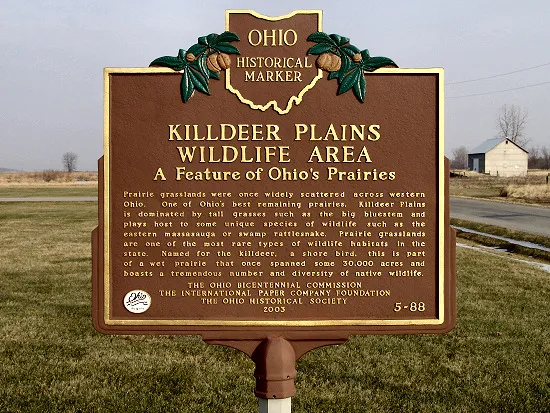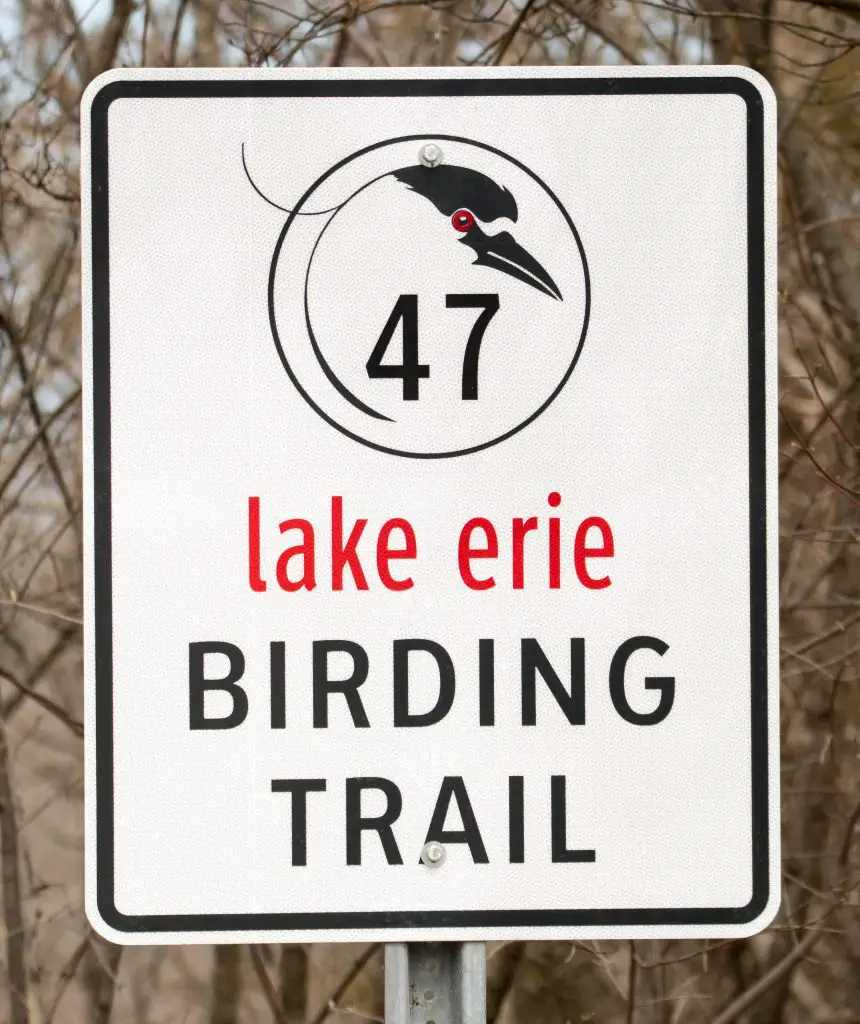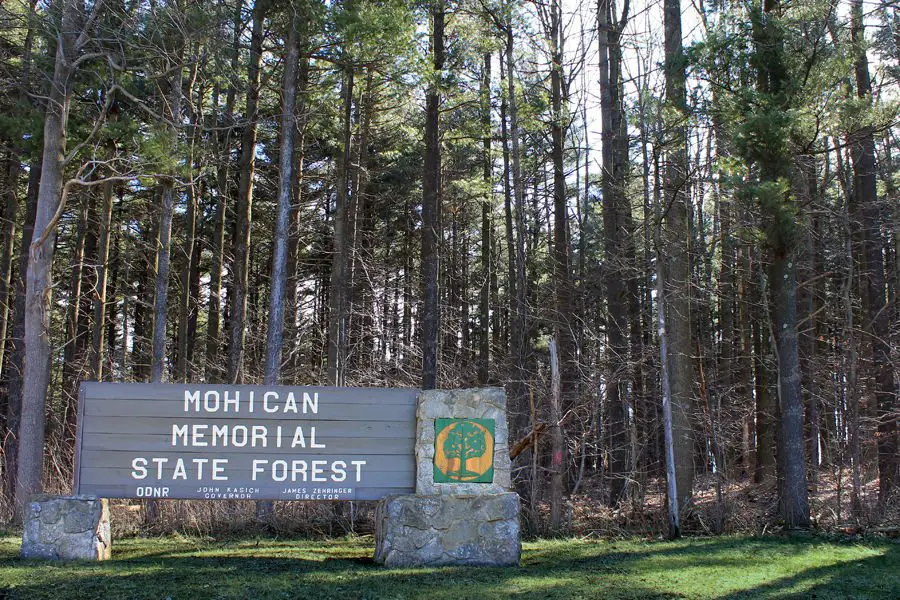Last Updated on: February 4, 2025
There are seven woodpeckers in Ohio. One of these species is migratory without a resident population for birders to see any time they venture outdoors during the year.
And that is…
The downy is the one you’re likely to see every day as it loves hanging around backyards.
The most exciting thing is that these bird species live in different habitats and climates, so birding to see them will never have a dull day in winter or summer. When do you plan to see them?
Woodpeckers Of Ohio: Habitats, Physical Features & Bird Foods
You’ll explore many habitats, from coniferous forests to urban parks. Are you ready? Let’s talk some more about Ohio woodpeckers and where to see them.
1. Hairy Woodpecker

Fortunately, it’s a resident species, so you’ll see it every time you’re birding. Even neighboring states like Indiana and West Virginia host hairy woodpeckers as it’s one of the common birds in North America.
You know a hairy woodpecker is different from a downy, right?
But plumage won’t help you tell their difference as they both have black and white stripes and red nape.
Instead, check its bill as a hairy’s bill is longer than a downy’s. It’s also larger because it measures between 7.1 and 10.2 inches long, while a downy woodpecker is about half that size.
A hairy woodpecker reaps where it didn’t sow. It loves following the trail of a pileated bird, hoping there are insects in its holes. At other times, the sap wells of a yellow-bellied sapsucker provide a snack of insects and sap for a hairy woodpecker.
Remember we said you’ll explore several habitats in Ohio? This bird will have you visiting oak and pine forests if there are no parks near you. You’ll find it on large trees or in a nest cavity in a dead tree.
2. Pileated Woodpecker

It’s mainly in eastern North America and the northwestern edge.
However, you’ll not see it in northwest Ohio or even Central Ohio.
A pileated woodpecker is unmistakable as it’s the largest among North American woodpeckers in OH, measuring between 15.8 and 19.3 inches long. Its red crest makes it distinctive since other species have a red nape or crown.
Though it’s an unlikely visitor to your backyard, you can try to attract it with a nest box or a dead tree to drum. Also, your yard might accommodate pileated woodpeckers if there’s a mature forest of pine trees with carpenter ant nests.
Look for big, deep, rectangular holes when exploring such forests. Alternatively, listen for persistent drumming and whinny calls.
3. Downy Woodpecker

Have you seen a downy before? It’s the smallest woodpecker species as it grows between 5.5 and 6.7 inches long, between the size of a house sparrow and an American robin.
It’s as common in North America as the European starling, but it’s not aggressive like this other bird. Therefore, you won’t mind hosting a dozen or more downy woodpeckers in your backyard.
The only adjustment you’d need is mounting several nest boxes so that it doesn’t drill all your trees to make nests or create a nesting cavity in a building like European starlings.
You’ll know a downy by its black and white plumage. Its upper parts have two black stripes with one white column running down the middle of its back. On top of that, a male has a red cap. This energetic bird flocks with chickadees and nuthatches as they explore a backyard bird feeder, woodlots, and urban parks.
Backyard feeders are inviting when you offer suet, sunflower seeds, millet, and peanut butter. If you hear a bird calling in a high-pitched pik, then it’s probably a downy exploring your suet feeder.
This doesn’t sing, so the only other sound that can alert you of its presence is its drumming.
In winter, a pair splits up to have more chances of getting food. Consequently, you’ll see a male on weed stems and small branches as a female takes on a tree trunk. Among the favorite wild foods are insects, insect larvae, and weeds.
4. Northern Flicker

Unlike other North American woodpeckers, this one migrates north during the breeding season, as far as Alaska and Canada. Then, it migrates a short distance south to wintering grounds in southern California, Mexico, and Texas. The flickers in Ohio and other U.S. states are resident birds to see throughout the year.
Another distinguishing factor is that northern flickers are ground-feeding birds like the northern cardinal. Instead of drumming tree trunks, they forage ants and beetles on the ground in open woods and forest edges.
A northern flicker is twice the size of a downy as it measures 11 to 12.2 inches long.
It prefers to stay in a forest than visit a bird feeder for suet. However, northern flickers still come to explore a birdbath, an open ground, or a mixed forest.
The birds in the eastern states have yellow shafts seen on their flight and tail feathers, while the west has red-shafted birds.
In addition to this distinctive physical characteristic, the eastern avian has a brownish body with black spots and bars, a white shoulder patch, and a red nape. The male has a black whisker that contrasts with the red whisker of western birds.
5. Red Headed Woodpecker

Only eastern states offer sightings of this colorful woodpecker avian. Even in this area, you’ll see the red headed woodpecker any time of the year in the southeastern region only. Southeastern Texas hosts the wintering birds that fly south from the breeding range in the northern states like North and South Dakota.
It’s between 7.5 and 9.1 inches long from its bill to tail, so it’s larger than a downy. This bird’s plumage differs from the spotted and striped bodies of woodpeckers. Of course, a red-headed woodpecker has a red-colored head. Its back is black with white wing patches, and its belly has white feathers.
Like the northern flicker, a red headed woodpecker isn’t into drumming tree barks, yet it has a chisel-like bill.
It’s not a ground forager either. You’ll see it in deciduous woodlands, grasslands, and farmlands catching flies or gathering nuts.
It also loves acorns like a blue jay, and it migrates out of forests when the breeding season starts to inhabit the edges of dead or dying trees. But, in the wintering range, you’ll find the red-headed woodpecker in mature oaks, maple, or beech trees.
6. Red Bellied Woodpecker

Yes, it’s another species only found in the eastern states. It’s one you’ll see any time of the year as there’s a resident population in Ohio.
Nonetheless, don’t look for a bird with a red belly because its underbelly doesn’t match the red shade on the crown of the male bird.
Instead, you’ll come across a bird with black and white stripes on its back, a pale belly, and whitish patches on its wingtips that you’ll see when it flies. Female woodpeckers have a red crown without the red nape of the males.
Woodlands make such a good habitat for the red bellied woodpecker because there’s always something to eat, from spiders to lizards and nuts. But, if there’s nothing to eat, it goes after nestlings.
As you watch a red bellied woodpecker hunt insects, you’ll see it extend its tongue over two inches from the tip of its bill to catch insects in crevices.
When it finds them, its sticky spit catches the insect. The male’s tongue is even wider and longer than a female’s. Therefore, a breeding pair can hunt in different habitats and bring more food to the nest.
Nest options for this avian include a dead tree even in your backyard. More so, it reuses nests.
A red-bellied bird is mid-sized as it’s 9.4 inches long.
7. Yellow Bellied Sapsucker

It’s a migrant bird, one of the few migratory woodpeckers in Ohio. The birds in the eastern states migrate a short distance to the southern U.S. However, the ones in the northwestern area of the continent fly longer distances between the breeding range north and wintering grounds in Central America, the same way the great blue heron does.
Would you like to know a bit more about its migration route? It flies from the breedings grounds in Alaska and Canada in September to winter south as far as Mexico and Central America. More female than male sapsuckers fly into Central America. The following year, around May, the species starts the migration back to the north.
A yellow bellied sapsucker is between 7.1 and 8.7 inches long. It leaves a trail of both circular and rectangular tree sap wells in a line above the old holes. But sap isn’t the only delicacy for this woodpecker species as it also eats insects caught in the sap wells.
A sapsucker can drill over 1,000 tree species, including the deciduous tree, even in hardwood forests 10,000 feet above the ground. The only place you’ll not find this woodpecker species is in pure conifer forests.
Places To See Woodpeckers Of Ohio
Ohio is a haven with many birding attractions, whether you want to start with a wooded area or a birding trail. Let’s look at a few of them.
1. Hocking Hills

Are you ready to explore hills and valleys? Part of the Hocking Hills region is under the Ohio Department of Natural Resources, and it has many attractions, from cliffs to state parks. You’ll see the pileated woodpecker in this region.
2. Buck Creek State Park

It’s next to C.J. Brown Reservoir, so you have two places to explore looking for migrant or nesting species like the red-headed woodpecker, marsh wren, and the northern bobwhite. The habitats are so diverse, offering you grasslands and old fields.
3. Killdeer Plains Wildlife Area

It’s a good destination for birding in winter, offering thousands of miles of grasslands and woodlands inhabited by species like the bald eagle, red-headed woodpecker, and the sandhill crane.
4. Lake Erie Birding Trail

This attraction has seven loops you can tour in summer or any other time of the year.
5. Mohican State Forest

One particular birding area that’ll excite you is Gazebo Trail.
6. Magee Marsh Wildlife Area

It’s a bird haven boasting over 300 species, so you’ll see many more avians as you search for this state’s woodpeckers.
You’ll have so many habitats to explore, from wetlands to woodlots. Based on the woodpeckers we talked about earlier, which ones do you think you’ll find in woodlots and wetlands?
This wildlife area also has a half-mile bird trail around a swamp.
Watch This!
Frequently Asked Questions
What kind of woodpeckers are in Ohio?
There are seven types of woodpeckers in Ohio though one isn’t in the northwestern and central area of the state.
Two are migratory bird species with a breeding range north of the continent and wintering grounds south. However, they still have a resident population to see any time of the year. Check the list of these seven birds in the section above.
What is the largest woodpecker in Ohio?
As we mentioned earlier, the pileated woodpecker is the largest in OH. However, it’s not the largest U.S. woodpecker as that title goes to the ivory-billed woodpecker that the Fish and Wildlife Service hopes to delist from the endangered list.
The pileated is also the inspiration for the cartoon character Woody Woodpecker though its creator, Walter Lantz, was thinking about an acorn woodpecker when he created it. An acorn has a red cap, while a pileated has a red crest. The character, Woody, has a red crest.
Conclusion
In summary, you have seven types of woodpeckers to see in OH. When do you want to start? If you don’t see a downy woodpecker first, then you’ll see a hairy one. These two are everywhere in this state throughout the four seasons.
They have the same plumage colors, though. You might be confused when you see them!
The pileated has a crest, the crimson head of a red-headed is unmistakable, while a northern flicker has a yellow tail shaft. When you have trouble identifying some species, use pictures of woodpeckers in Ohio.

